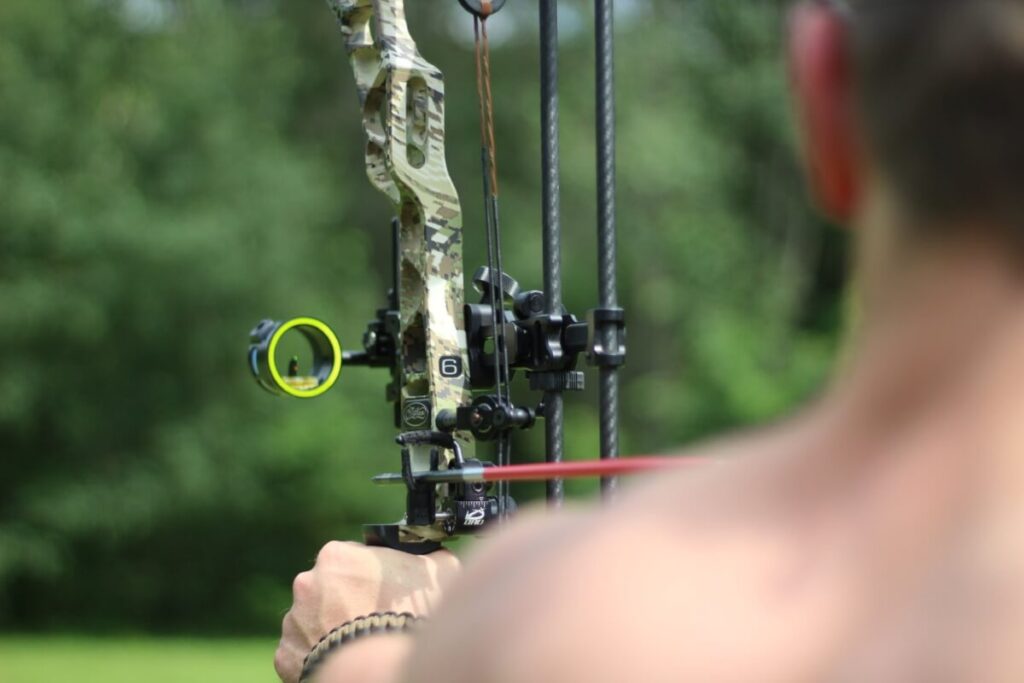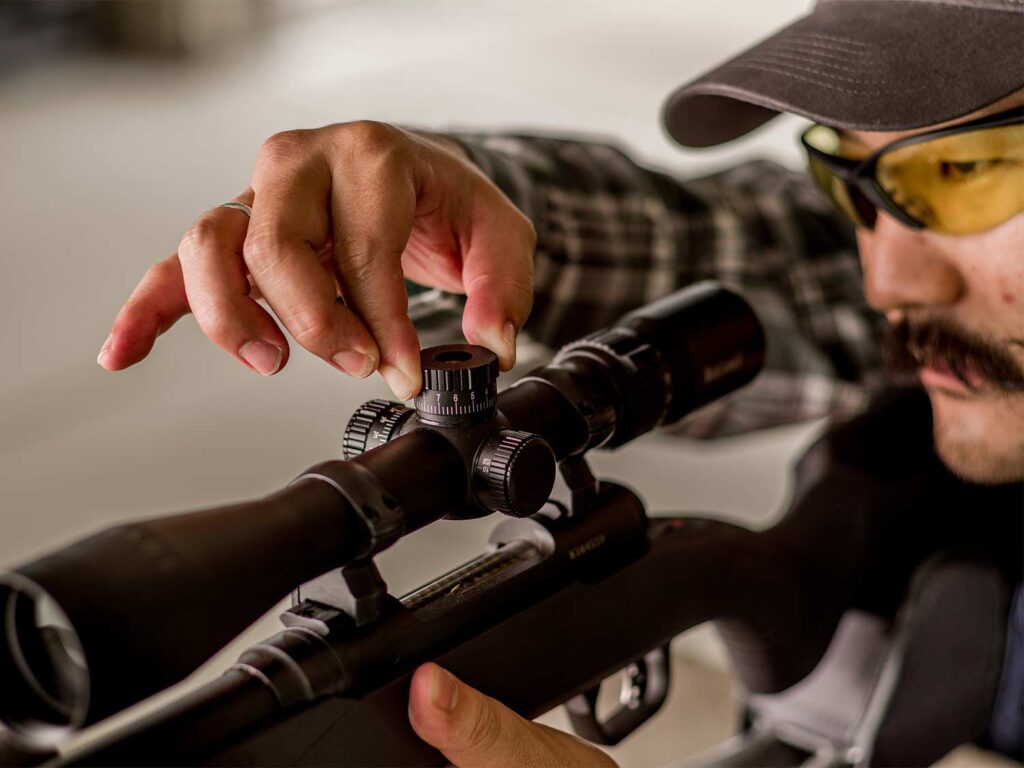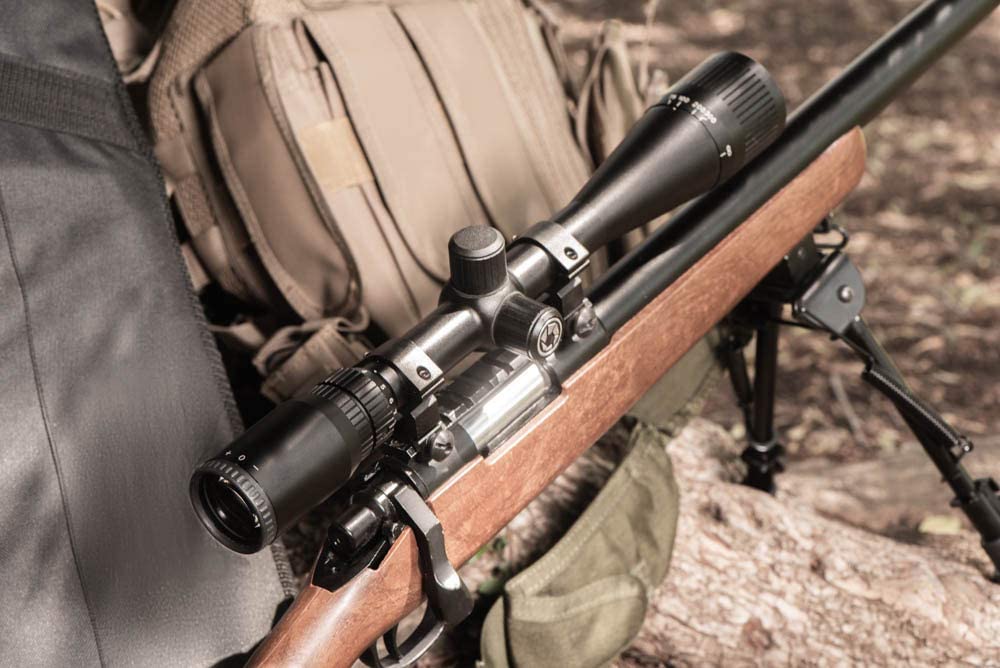

Once you are introduced to a red dot sight, you probably won’t want to stop using it. After all, your aim will improve, you can hit your targets much more frequently, and their use is not just limited to rifles.
Whatever type of shooter you are, these devices are bound to up your game, and this might spike your curiosity. “Just how do red dot sights work?” This is a question asked by those who’ve seen the benefits of the devices and those who want to try them out for the first time. While we don’t know why exactly you’re asking the question, we can provide you with a detailed answer, as evident below.
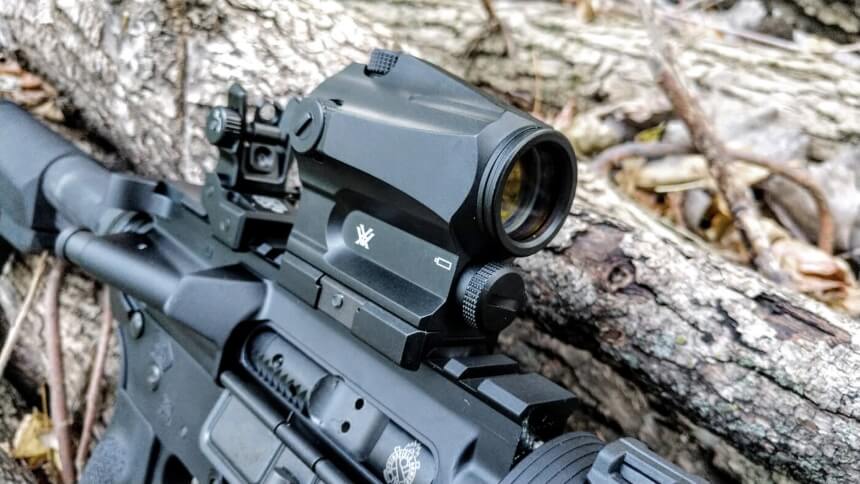
Typically, the optical elements in the device project a reticle(the red dot you see when looking through the ocular lens of your scope) on top of the image you see. You use this dot to ensure you get your aim right before shooting at a target.
Depending on how well the red dot sight was designed, people downrange may or may not see the light projected. To prevent this, a kill flash filter can be positioned over the objective lens of the device. It will, in turn, disperse any projected light that may attempt to pass through it, therefore making sure nobody downrange can see it.
Worth mentioning is that not all red dot sights have a red reticle which some people might consider ironic. In some cases, the reticle is green, and we don’t have any qualms with that as it simplifies matters for shooters.
Also worth noting is that you can’t just pick any red dot sight just because you have a gun. There are two major categories of red dots to choose from, and picking the wrong one means you hinder your shooting efforts instead of enhancing them.
The first and most popular red dot option is the full-size scope. You might find it implied in the name that it works better for full-size firearms. Examples include shotguns and rifles like the AK-47 or the 20-250 for when you’re hunting. Characteristically, these red dots have 25mm objective lenses or larger and either a 2- MOA(minute of angle) Trusted Source minute of angle - Wiktionary An angle, one sixtieth (1/60th) of a degree, used by gunners as a measurement of accuracy. One minute of angle is roughly equal to 1 inch at 100 yards distance. en.wiktionary.org or 3-MOA dot.
Ideally, full-size scope red dots are used for close to moderate range shooting. Their capabilities can also be boosted when you introduce a magnifier or night vision optics to the device. Due to their designs, full-size options are heavier and bulkier, which is probably why they only work with rifles.
The alternative is miniature red dots. Just like the full-size option, the name is quite descriptive of the type of red dot that you will be getting. People either choose to use them as backups for their main/full-size scopes or fit them onto their pistols.
If you pick one of these up, you should immediately note the difference where they are lighter and even a lot smaller than their counterparts. If you’re looking to have a red dot that’s easy to carry, miniature ones will top the shortlist.
Owing to how small manufacturers are making these devices, they present an option for people who carry concealed weapons to improve their accuracy. That said, their range is relatively limited and maxes out at about 100 yards. This is about half the maximum range of full-size red dots.
Also, more people are choosing red dots over iron sights for various reasons. One is that iron sights are more complicated when you’re trying to aim. They incorporate two parts on both ends of the sight that need to be physically aligned if you plan on hitting your target. When hunting, this can be time-consuming, and if you take too long, your target may even stroll past you.
Anybody who values speed while shooting will thus have to pick red dots over their counterparts. Focusing on the target also seems a lot easier if you have a red dot on your Mini 14 ranch rifle or Springfield 30-06 gun. After all, if the red dot is on your target, you’ll likely hit your mark.
As you will see later on, some red dots allow you to keep both of your eyes open. Of course, one will be looking through the sight while the other will not. This kind of situational awareness, especially for hunters, can be a lifesaver as you never know what is coming at you when you’re not looking.
We have also mentioned the presence of a light. As such, these sights are better low-light performers. Some of the iron sights you might come across may not even be illuminated.
Red dot sights are further split into three types, namely prismatic sights, reflex sights, and holographic sights. While they may look similar while your eye is placed on the exit pupil, they might work slightly differently. You may want to find out these differences as well, especially if you’re in search of the next red dot for your rifle.
Nevertheless, once you get down to the nitty-gritty of how they work, you’ll soon see they work on the same basic premise. For one, they all need a light built into the device. Also, they need special glass. The most basic red dots have an LED as the source of light.
The light is beamed onto a sort of mirror in the machine that’s coated so that it reflects one spectrum of light, i.e., the red spectrum. This means that only red light will move from this mirror to the next stage, which is through the exit pupil and into your eyes.
Of course, what you will see is the red light on top of whatever target you’re aiming at. Notably, if the coating process for the reflective glass goes wrong, the “red dot” image of the reticle will be ruined, and the device will thus be unusable.
Even where the reticle is green, the devices work the same, only that the glass is coated to eliminate all colors except green in the light spectrum. Next, we look at the varying types of red dots and how they may stray from the basic design we just described.
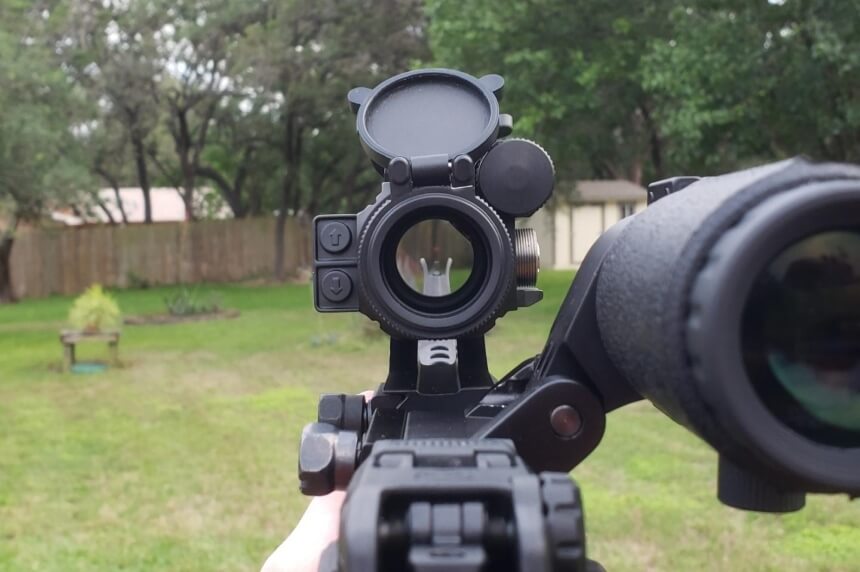
You find similar technology in lots of binoculars as well. A significant benefit that accrues from this design decision is magnification. In fact, it’s not surprising when a prismatic sight can offer more than 3X magnification.
If you were to take one such sight apart, you would find the reticle etched onto the glass in the device. However, this reticle is illuminated, which will give the “red dot” effect. Notably, some manufacturers have figured out a way to offer dual illumination. In such cases, you can pick either red or green depending on the situation.
Also, depending on the lighting conditions, you can use the scope without illuminating the reticle. After all, it’s there whether you illuminate it or not. Another common characteristic of prismatic sights is an adjustable diopter. Consequently, if you have astigmatic eyes, you have a better chance of hitting your target if you get one of these as opposed to reflex red dot options.
That said, prismatic sights don’t tend to be very forgiving if you have good eyesight. This may, in turn, lower your chances of a bullseye. How these devices work also means that battery life gets quickly drained.
According to reviews, the Vortex Strikefire II remains a popular purchase for prismatic red dot sight lovers, especially since you can adjust the intensity of the dot. Also, just like we mentioned, you get both green and red illumination options for the reticle at your disposal.
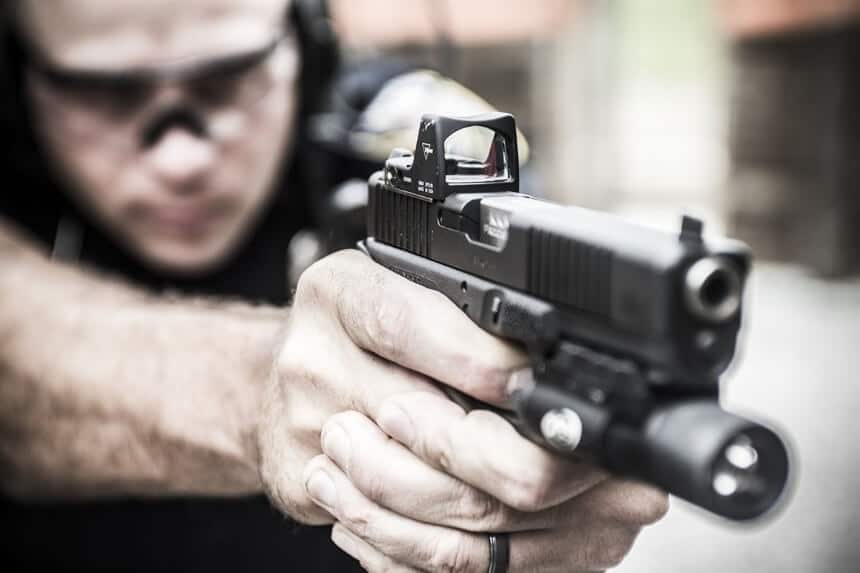
As for the other type, manufacturers try to make sure the mount is as low as possible. They do this by incorporating both the battery and the reticle system on the side of the tool. The result is a miniature-looking scope with full-size scope capabilities.
Reflex sights are the ones that use an LED light as the reticle light source like we mentioned before. Also, the higher the quality of the sight, the less visibility there is for the light for people downrange. Unlike the prismatic option, you are more likely to get only one color for the reticle.
There are also benefits and downsides specific to this kind of sight. One major upside is forgiveness. You may not even need to look at the reticle from a straight angle to hit your target. Another benefit is that you may be more comfortable with these sights thanks to their low mounts, long eye relief, and the fact that you needn’t close one of your eyes to shoot.
The lack of magnification, on the other hand, is a bummer. Users seem to recommend the Trijicon RMR Type 2 as a top-tier head-up design reflex sight. The adjustable windage and elevation settings, as well as the up to four-year battery capacity, seem to be some reasons why the sight has so many rave reviews.
If you’re astigmatic, you may have a more challenging time aiming with reflex sights, and it might be better to avoid them altogether.
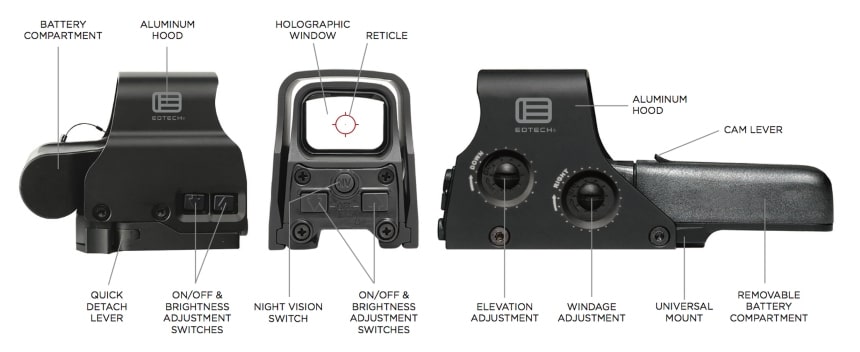
If you get a holographic red dot, you won’t need to deal with glare or people seeing the light from downrange. In addition to that, holographic sights are highly accurate if reports by users and experts are anything to go by. This would make them ideal for longer ranges if you can get one.
Notably, some of these sights look slightly similar to the head-up reflex sights. They are also somewhat problematic for astigmatic individuals. Nevertheless, if you want to get one, you’ll likely need more funds than you would need for the other two types of red dots.
Lastly, in addition to better accuracy at longer ranges, the eye relief of these devices is praiseworthy, and you don’t have to close either eye when using one. According to most reviews, one of the go-to holographic sights for experienced shooters is the Eotech XPS3. It’s easier to use this sight with a night vision mount, and the 1000-battery life seems more than sufficient.
Also, every time you look at the specs and features of a scope, you’ll see MOA indicated next to a number. We already mentioned that MOA stands for minute of angle, but what exactly does it mean? Well, it is a size measurement used to describe how big or small the reticle is.
Choosing a larger or smaller MOA will depend on the size of your shooting range. If you’re trying to aim further, the larger MOA rating is preferred. Since you’re further from what you want to hit, the ‘large’ red dot won’t cover the whole image of your target.
Nevertheless, you might struggle to see closer targets with a large MOA since the red dot will likely cover the image. For the Vortex Strikefire II and the Trijicon RMR, the reticle values are 4 and 6.5 MOA, respectively.
We may have alluded to some of the benefits and downsides of these types of sights as we explained how they work. However, we are going to relist them here for clarity, starting with the pros/advantages.
How do red dot sights work? Well, we’ve comprehensively answered that in this writeup. What’s left is to buy one if you need it and get to shooting. Thank us later for the better accuracy and the shots you get on target.
